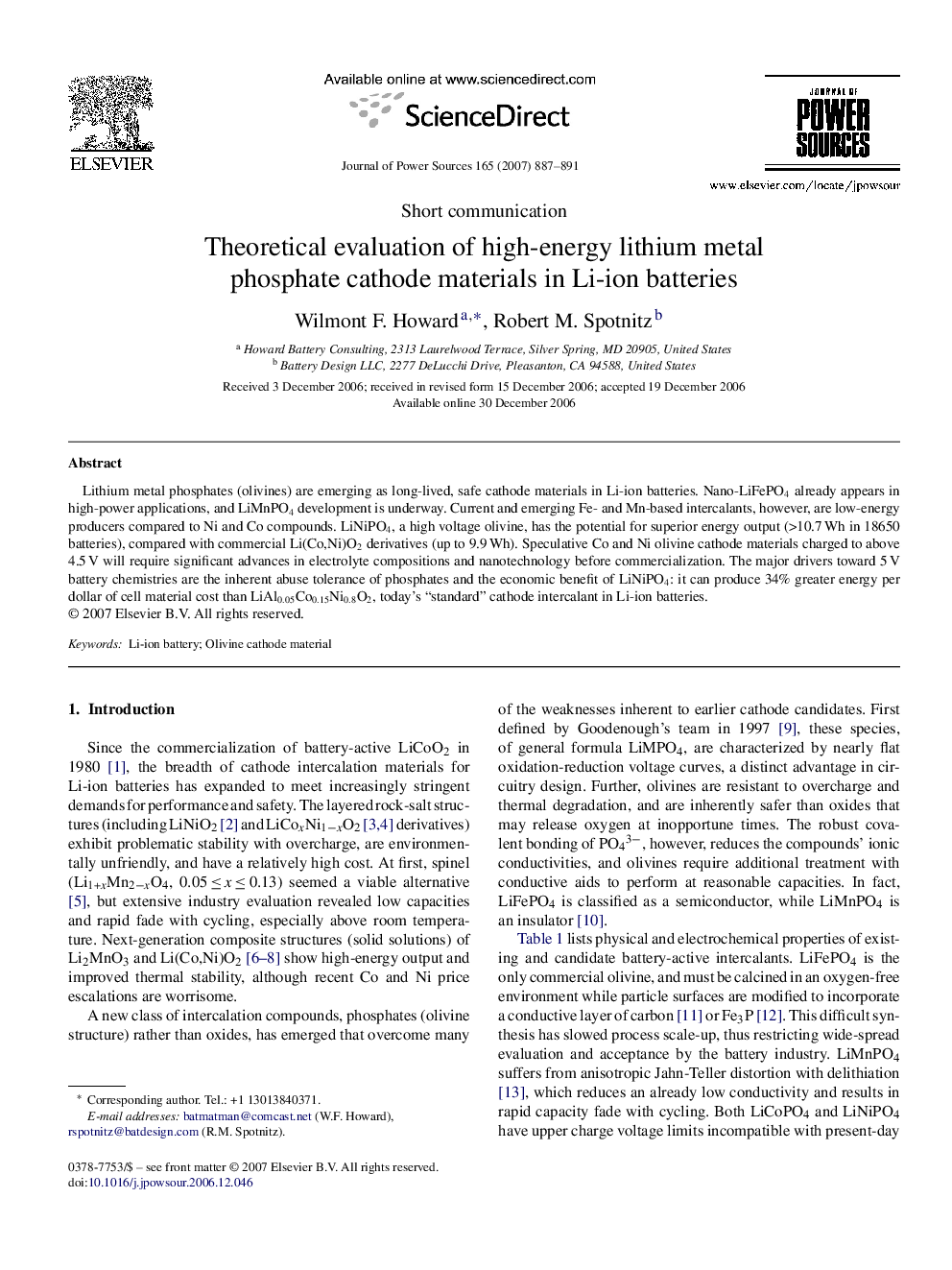| Article ID | Journal | Published Year | Pages | File Type |
|---|---|---|---|---|
| 1291605 | Journal of Power Sources | 2007 | 5 Pages |
Lithium metal phosphates (olivines) are emerging as long-lived, safe cathode materials in Li-ion batteries. Nano-LiFePO4 already appears in high-power applications, and LiMnPO4 development is underway. Current and emerging Fe- and Mn-based intercalants, however, are low-energy producers compared to Ni and Co compounds. LiNiPO4, a high voltage olivine, has the potential for superior energy output (>10.7 Wh in 18650 batteries), compared with commercial Li(Co,Ni)O2 derivatives (up to 9.9 Wh). Speculative Co and Ni olivine cathode materials charged to above 4.5 V will require significant advances in electrolyte compositions and nanotechnology before commercialization. The major drivers toward 5 V battery chemistries are the inherent abuse tolerance of phosphates and the economic benefit of LiNiPO4: it can produce 34% greater energy per dollar of cell material cost than LiAl0.05Co0.15Ni0.8O2, today's “standard” cathode intercalant in Li-ion batteries.
